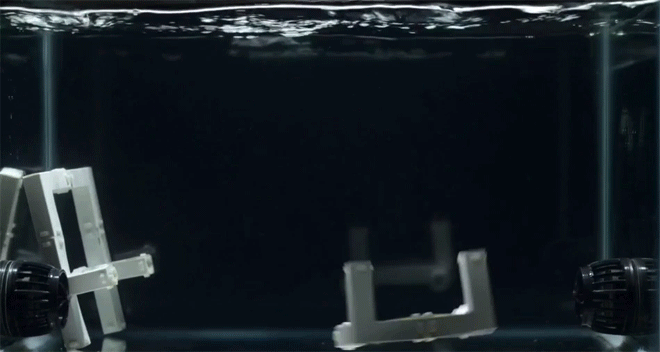Fluid Assembly Furniture: MIT scientists create chair that assembles itself

Furniture capable of assembling itself underwater has been developed by scientists at the Massachusetts Institute of Technology (MIT).
Fluid Assembly Furniture is the latest project to come out of MIT's Self-Assembly Lab, run by research scientist Skylar Tibbits, which has previously worked on programmable materials that can self-assemble to create installations.
Tibbits claims that the 15cm by 15cm chair is the first ever chair to be able to assemble itself, and has released a timelapse animation showing the process at work.
Six white blocks fitted with magnets come together autonomously to form a chair through a process of trial and error made possible by turbulence in the water.
"At close proximity, each piece should easily connect with its corresponding component but never with another one," Baily Zuniga, a student in the Self-Assembly Lab, told Wired.
"Finding a way to make the pieces more interchangeable would increase the probability of the pieces finding their matches, thus resulting in a faster assembly."
The process shown in the animation took around seven hours to complete but Tibbits believes that as a proof of concept it is a positive step forward for the lab's work on fluid crystalisation.
"The highly dynamic self-assembly characteristic of the system offers a glimpse at material phase-change between crystalline solid, liquid, and gaseous states," Tibbits said.
"Turbulence in the water introduced stochastic energy into the system, increasing the entropy and allowing structures to self-assemble; thus, transitioning between gas, liquid, and solid phases."
It is hoped that in the future the team will be able to make a self-assembling chair and other furniture large enough for practical use.
© Copyright IBTimes 2025. All rights reserved.






















